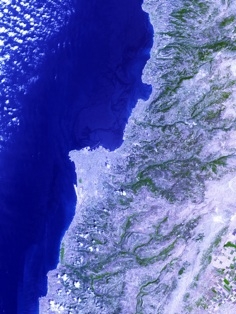From the archive: Cleaning up an oil slick
The 2006 Israeli offensive in Lebanon led to an enormous oil slick, and prompted The Engineer to take a look at the role technology can play in cleaning up oil spills. By Niall Firth
Although rightly overshadowed by the ensuing humanitarian crisis, one of the lesser-reported effects of the Israeli offensive in Lebanon earlier this year can only be fully appreciated by air. Lapping at the shore, an insidious black scar is creeping along this beautiful stretch of coastline which only a few months earlier had been packed with tourists.

An air strike on the Jiyyeh power station, just over 20km south of Beirut, destroyed its oil tanks resulting in an estimated 35,000 tonnes of viscous oil seeping into the Mediterranean, making it Lebanon’s worst-ever environmental disaster. Threatening local sea life, including turtles, and shattering the already fragile tourism industry, it is estimated that the slick — which has already reached the Syrian coast — may eventually cost more than $100m (£53m) to clean up.
While the legal repercussions of the disaster are ongoing — any funding towards the clean-up process will form part of post-war reparations — it will eventually fall to specialist oil spill engineers to begin reigning in the deadly black ‘gloop’.
As one of the world’s largest oil spill responders, Southampton’s Oil Spill Response (OSR) is likely to be involved in tackling the slick. OSR is a not-for-profit organisation owned by the oil industry, with its 32 members — including major oil companies such as BP and Shell — paying a subscription to be affiliated.
‘There are thousands of different oil types,’ said Dave Salt, OSR’s technical director who oversees the complicated and varied challenges of responding to the world’s worst oil spills. ‘Every one is different, and they all behave differently. We need to know what it is, where it is and where it’s going. Then we can decide what we can do about it. Something like gasoline is a safety problem, while some lighter ones evaporate and disperse quite readily, so that in the teeth of a Shetland gale it is difficult to find evidence of an 85,000-tonne spill. At the other end of the spectrum is a crude oil that is viscous and with a high wax content.’
To decide on how best to tackle the slick, OSR uses software models that analyse databases detailing how different oils react in a variety of weather conditions. While oil moves at nearly 100 per cent of the sea’s current speed, the wind only has about a three per cent influence on its likely future movements. The software looks at historical wind and current data to predict the likely trajectory of the spill. Once the oil type is known — based on information provided by the relevant parties — and the probable effects of the weather and sea temperature on it have been modelled, then a strategy can begin to take shape.
Register now to continue reading
Thanks for visiting The Engineer. You’ve now reached your monthly limit of premium content. Register for free to unlock unlimited access to all of our premium content, as well as the latest technology news, industry opinion and special reports.
Benefits of registering
-
In-depth insights and coverage of key emerging trends
-
Unrestricted access to special reports throughout the year
-
Daily technology news delivered straight to your inbox










Water Sector Talent Exodus Could Cripple The Sector
Maybe if things are essential for the running of a country and we want to pay a fair price we should be running these utilities on a not for profit...